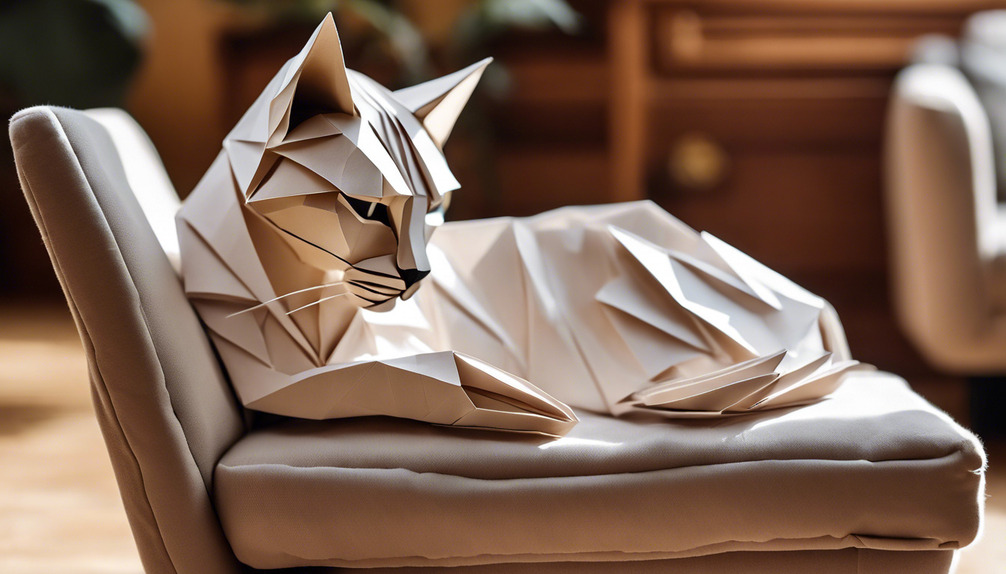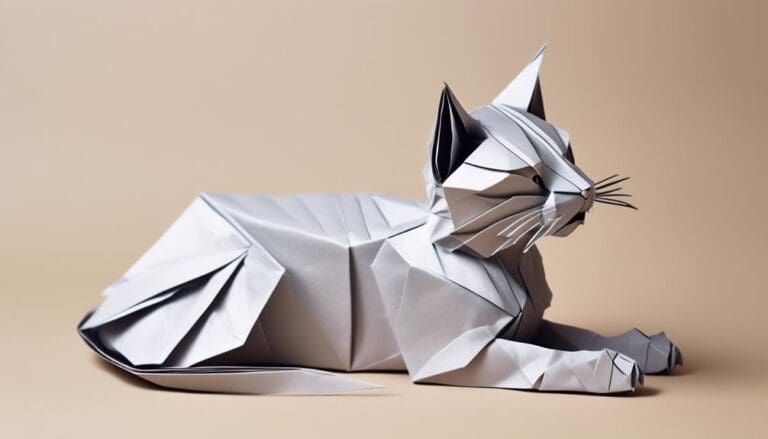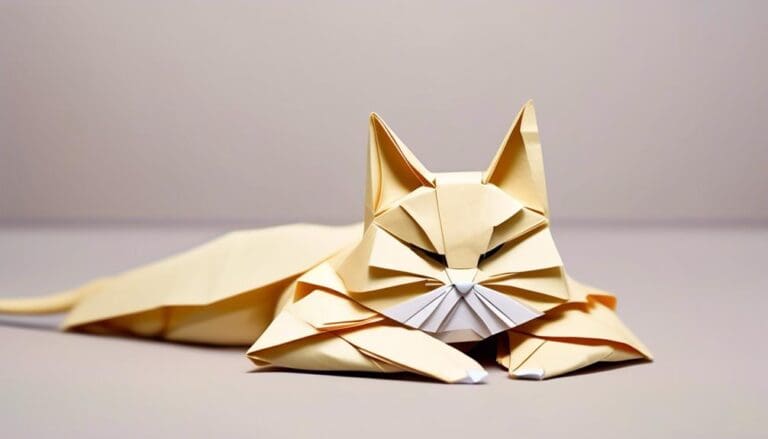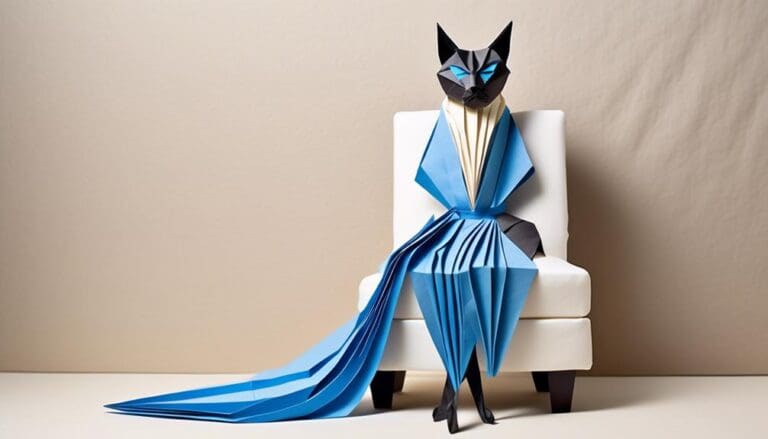As your beloved cat gracefully enters their golden years, it’s essential to adapt your grooming routine to cater to their changing needs.
The gentle touch and affection you provide during grooming can make a world of difference in your senior cat’s comfort and well-being.
Let’s explore five essential tips that will help you understand the world of at-home elderly cat grooming with grace and confidence.
Key Takeaways
- Recognize and accommodate your senior cat’s physical limitations during grooming, such as arthritis.
- Create a calm and secluded grooming environment to minimize distractions and help your cat relax.
- Use gentle brushing techniques, paying extra attention to sensitive areas prone to mats.
- Practice proper bathing and drying techniques, ensuring your cat stays warm and associating grooming with positive experiences.
Understanding Your Senior Cat’s Needs
Recognize the physical limitations that can affect your senior cat’s grooming abilities, such as arthritis, and take proactive steps to accommodate their changing needs with compassion and understanding.
As your cat grows older, their fur requires more attention. Regular grooming not only keeps their coat healthy and shiny but also allows you to check for any skin issues. Older cats may develop mats in their fur, which can be uncomfortable and even painful for them.
Use a soft brush to gently groom your senior cat, paying particular attention to areas where mats tend to form. Be gentle and patient, understanding that your cat’s skin may be more sensitive now. If you notice any mats or tangles, gently work through them to prevent discomfort.
Ensure that your senior cat is comfortable during grooming sessions, as older cats may have joint issues and find it difficult to maintain certain positions for extended periods.
Creating a Calm Grooming Environment
To create a calm grooming environment for your elderly cat, find a quiet, comfortable spot where your cat can relax and feel at ease during grooming sessions.
Here are some tips to help you create a soothing atmosphere for your senior cat’s grooming needs:
- Minimize Distractions: Choose a secluded area in your home for grooming to reduce external noises and interruptions that may cause stress for your cat.
- Gentle Approach: Use soft, soothing tones and gentle petting to help your cat relax during grooming sessions. Speak in a calm, reassuring voice to create a tranquil atmosphere.
- Gradual Introduction: Introduce your cat to the grooming area gradually, allowing them to explore and become familiar with the space. This approach can help alleviate any anxiety associated with the grooming environment.
- Relaxation Aids: Consider using pheromone sprays or diffusers designed to promote relaxation and reduce anxiety in cats. These aids can contribute to a serene grooming environment for your older cat.
Brushing Techniques for Older Cats
Creating a calm grooming environment for your elderly cat is essential. Once you’ve established a soothing atmosphere, you can focus on the brushing techniques that best suit your senior cat’s needs.
Choose a comfortable location for brushing, such as a soft mat, to make the experience as pleasant as possible. Start by petting your cat from head to tail to identify sensitive areas. Then, use different brushes, including rubber, pin, and metal comb, to detangle fur and brush through mats. Pay extra attention to sensitive areas like hips, underbelly, and hind legs.
Be gentle and avoid cutting or pulling at mats. Instead, use a finger or cornstarch to gently loosen them. Take special care when brushing sensitive areas and joints. If you notice any lumps or bumps, it is best to seek vet advice.
When brushing the cat’s hips, hind legs, and underside, consider using a grooming brush with softer bristles to prevent discomfort. Throughout the process, provide soothing praise to reassure your older cat and make the experience as positive as possible.
Managing Bathing and Drying
Before bathing your elderly cat, ensure you use a soothing voice and remain calm throughout the process to help your cat relax.
Here are some essential tips to help you manage bathing and drying your senior cat:
- Brush Your Senior Cats: Before the grooming session, gently brush your senior cats to remove any mats and tangles. This helps to prevent discomfort during the bathing process.
- Keep Your Cat Calm: During the bathing process, speak to your cat in a soothing voice and handle them gently. This will help keep your cat relaxed and make the experience more comfortable.
- Completely Dry Your Cat: After the bath, gently pat your cat with a towel, ensuring to keep the head and face dry. It’s crucial to keep your cat warm and dry after bathing, so they don’t catch a chill.
- Praise and Some Treats: To positively reinforce the experience, praise your cat and offer some treats after the grooming session. This will help your cat associate grooming with positive experiences.
Nail Trimming and Ear Care for Seniors
After ensuring your senior cat’s bathing and drying experience is as calm and comforting as possible, it becomes important to address their nail trimming and ear care needs to maintain their overall health and well-being.
Nail trimming for senior cats should be done monthly to prevent overgrowth and ingrown nails. Use cat-specific nail clippers and be cautious not to cut into the quick, the sensitive part of the nail. Approach this task with gentle and calm handling to ensure your senior cat’s comfort.
When it comes to ear care, cleaning your cat’s ears regularly using a cat-specific ear cleaner and cotton balls is essential. Avoid deep insertion into the ear canal and be mindful of signs of infection or ear mites during the cleaning process. If you notice any concerning signs, seek veterinary care promptly.
Maintaining your senior cat’s grooming routine, including nail trimming and ear care, is crucial for their overall well-being. Always use special cat shampoo to bathe your senior cat, detangle their fur with a rubber brush, and use a metal comb for any stubborn knots.
Your compassion and care will ensure your senior cat feels loved and comfortable throughout the grooming process.
Frequently Asked Questions
How Can I Help My Elderly Cat Groom?
You can help your elderly cat groom by gently brushing their fur, using a soft cloth to wipe their eyes and ears, and providing a warm, comfortable environment. Show them love and patience throughout the grooming process.
How Often Should I Bathe My Elderly Cat?
You should bathe your elderly cat as recommended by your veterinarian, based on its specific needs. Regular consultation with a professional will ensure that you are bathing your cat at an appropriate frequency for its health and comfort.
How Do You Get Matted Hair off an Older Cat?
Carefully loosen mats with your fingers or cornstarch, avoiding cutting or pulling. Seek assistance from a groomer or vet for delicate skin. Use a grooming brush with softer bristles. Improper technique can lead to injuries, so seek professional assessment.
How Can I Improve My Older Cat’s Coat?
To improve your older cat’s coat, brush them regularly with a soft-bristled brush to remove loose fur and distribute natural oils. Provide a high-quality diet and consider adding a supplement like fish oil for added skin and coat health.




